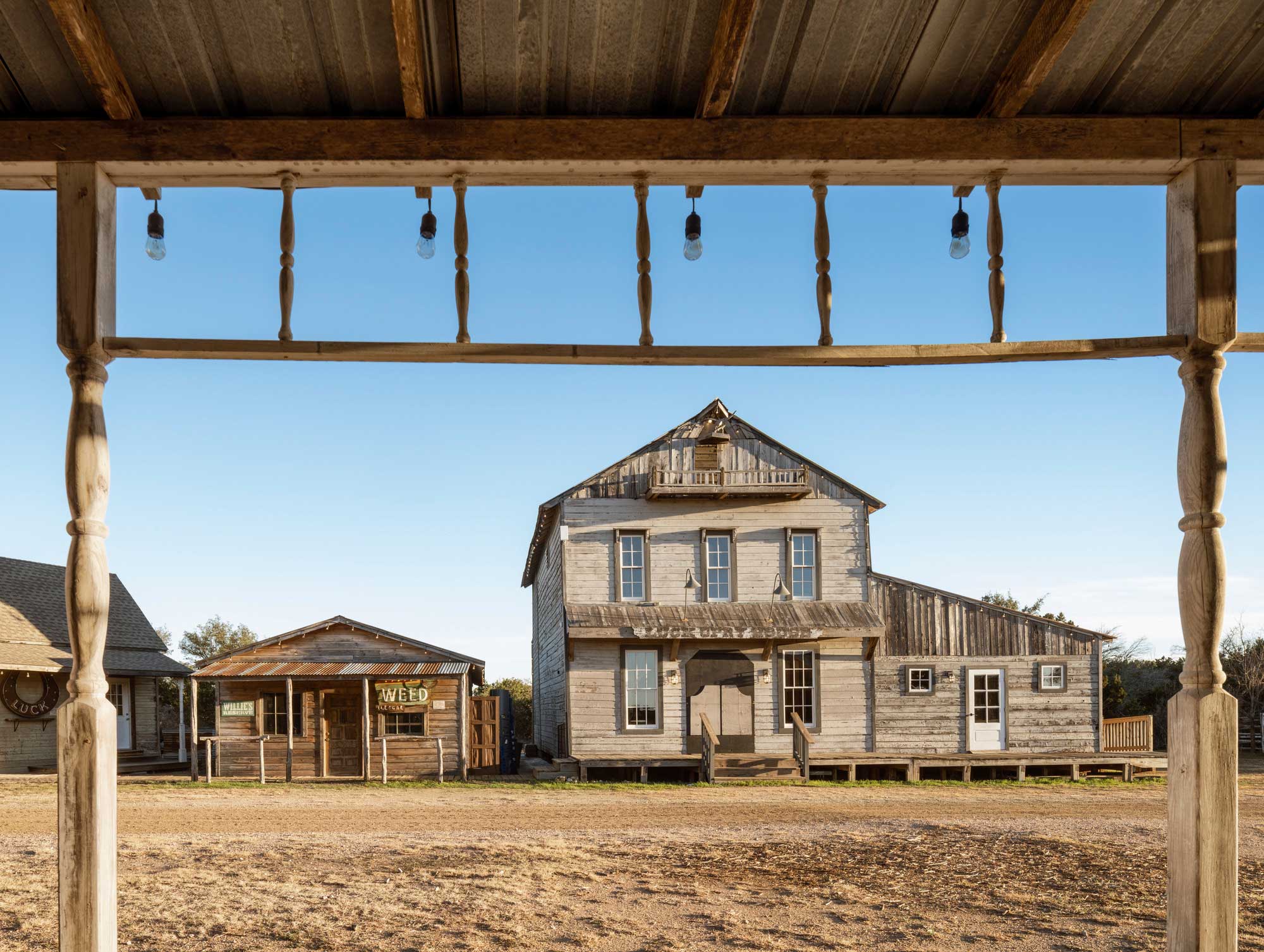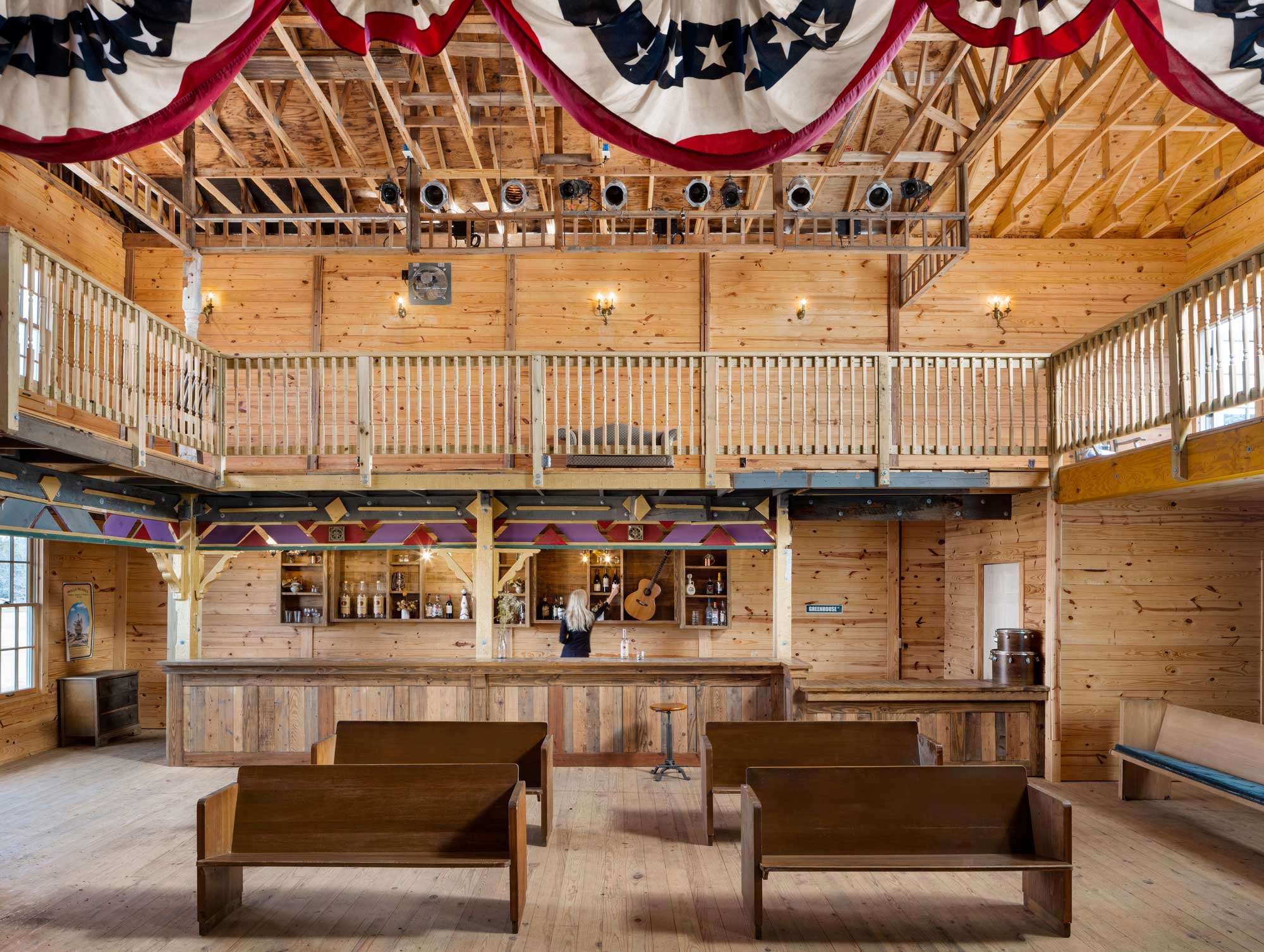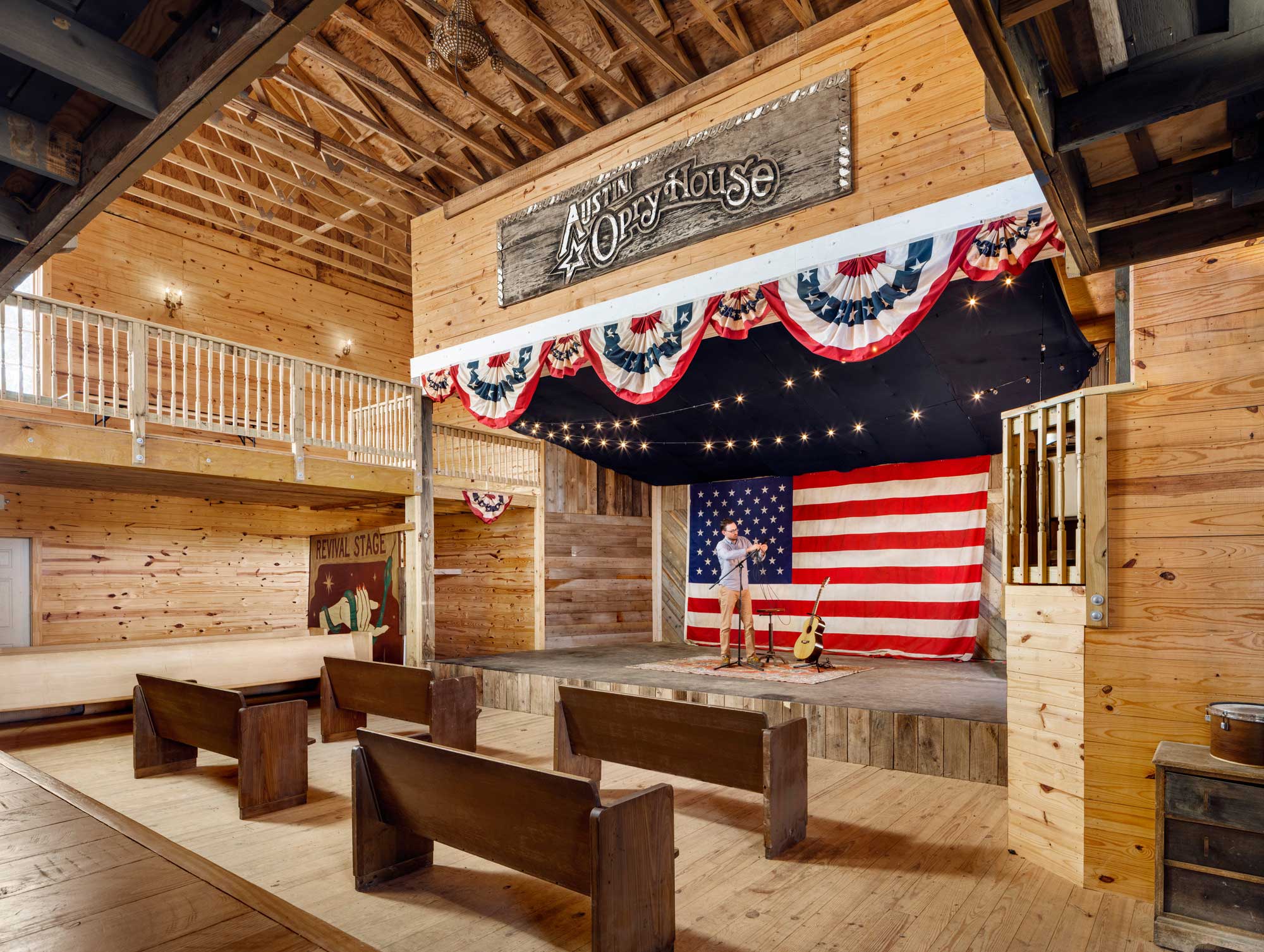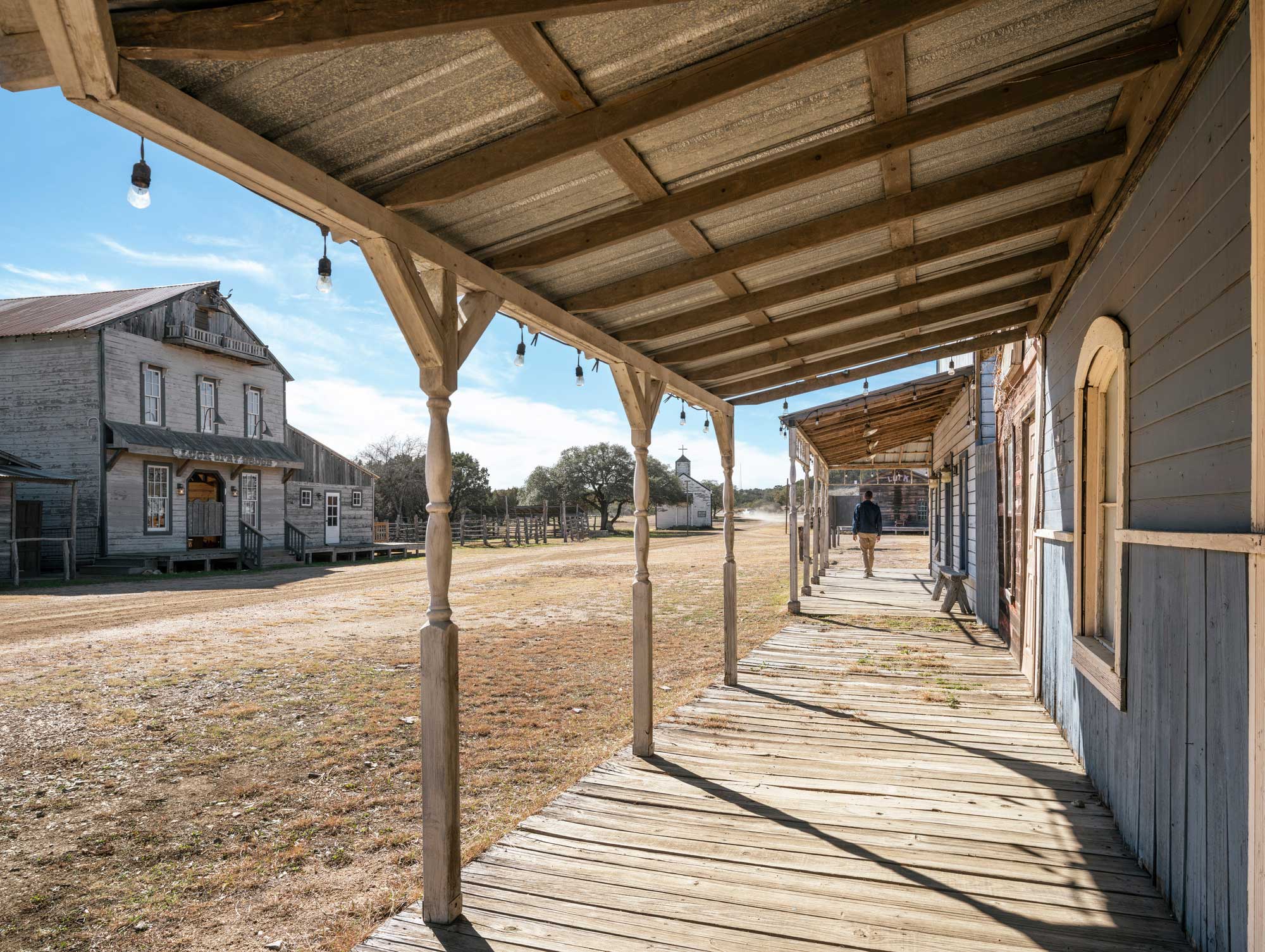Architecture as Ethos: Enhancing a Classic at Willie Nelson’s Luck Ranch
Sometimes architecture isn’t solely about serving functional needs. Sometimes its purpose is to create a magical backdrop. This is the case for Willie Nelson’s 500-acre Luck Ranch, located in Spicewood, Texas, just outside of Austin. Set within the ranch is the pop-up town of Luck, built in the mid-1980s as a set for the film adaptation of Willie’s iconic 1975 album, “Red Headed Stranger.” The original script for the movie called for burning down the set, but because Willie loved the makeshift Old West town so much, the script was revised and Luck was saved.
Driving through Luck Ranch, you pass Willie’s seventy rescue horses and come upon a large, Hollywood-style sign that reads “LUCK.” Built along a dusty main street, Luck’s collection of buildings includes an opry house and saloon, a general store, the Luck building and whiskey barrelhouse, a jail, a chapel, and Willie’s world headquarters. Over the years, Willie has transformed the former movie set into an event venue where family, friends, and fellow musicians come together to share music and comradery.

The Hollywood-style sign that reads “LUCK” announces the Old West-style town of Luck on Willie Nelson’s Luck Ranch.
In 2019 — ahead of the annual music festival, Luck Reunion — Cushing Terrell conducted a feasibility study to look at opportunities and operational needs for the town with the first phase focused specifically on the Luck Opry House and Saloon. The Opry House, which features a small stage and dance floor, saloon-style bar, and back-of-house support spaces, is one of the main stages for events at the ranch.
Cushing Terrell, led by principal and site director Wayne Freeman, along with structural engineering firm Hollingsworth Pack and general contractor Bill Ball, carried out the work to preserve and renovate the Opry House and Saloon, the signature building within the collection. The goal was to stabilize the building, which was never meant to last, and adapt it to meet current building standards and contemporary use without losing its Old West look and feel.

The Opry House and Saloon (right) is one of the original structures built on Willie Nelson’s ranch to serve as the set for the film adaptation of his album “Red Headed Stranger.” Today, the building is one of several stage venues for musical performances during the Luck Reunion.
Looking at the Opry House building from the outside, it’s hard to tell that we did anything at all and that was the point.
Alexander Bingham
Project Architect
Initial plans for a much larger renovation, including demolishing the Opry House and Saloon except for its front façade, were scaled back to focus on the essence of the 1,340-square-foot building. Even though the structure is not historic, the design team approached it with the same level of care as they would for a preservation project.
The idea was to work with what was already there (wood-clad walls, wood floors, and exposed wood trusses) and keep the same look and feel while optimizing the venue for its new purpose. A 642-square-foot addition — bringing the total square footage to 1,982 — was paired with structural upgrades, egress improvements, and general repairs to the building. The exterior was largely left as it was, except for repairs to the siding and roof.
The Opry House and Saloon was originally constructed as a movie set prop with interior fixtures and materials resembling an Old West-style bar and dance hall. The renovation project created a functioning bar, dance floor with raised stage, and performer green room, as well as infrastructure in place for future ADA accommodations.
We converted a movie set Old West-style saloon into a functional event venue while keeping the magic intact. Generations will share a part of Willie Nelson’s legacy every time a note comes off that stage.
Bill Ball
General Contractor
One of the biggest challenges was meeting the aggressive construction schedule, which meant repairs needed to be completed in time for the Luck Reunion, which brings nearly 4,000 guests to experience more than 35 bands on five stages, including the Opry House stage. In addition to being a stage for talented musicians, the Opry House serves as a venue for photo shoots and videos — a backdrop that creates feelings of nostalgia and community and reflects the distinctive spirit of Texas.
Luck Ranch isn’t about logic or practicality. It’s about capturing a spirit of Texas and a manifestation of how Willie would like to see the world.





